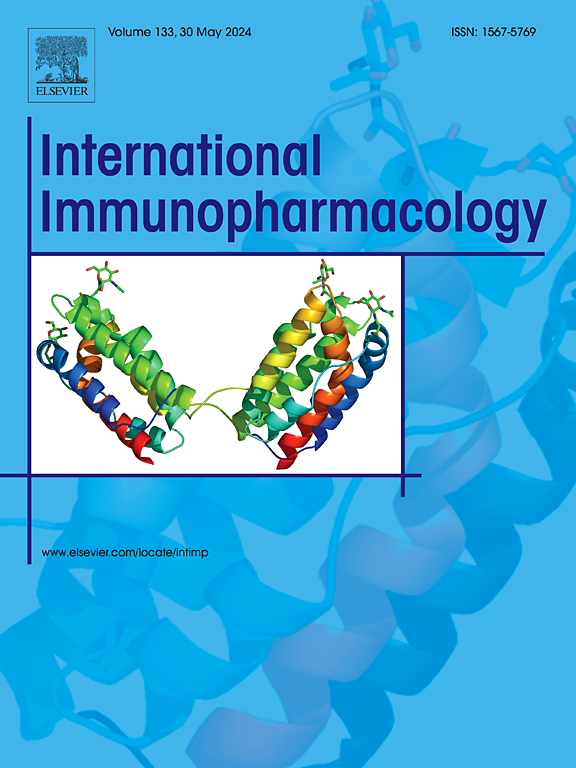Identifying cardiovascular toxicity associated with sphingosine 1-phosphate receptor modulators: A case-control study based on the FDA adverse event reporting system
IF 4.8
2区 医学
Q2 IMMUNOLOGY
引用次数: 0
Abstract
Introduction
Cardiovascular events represent a significant safety concern associated with sphingosine 1-phosphate receptor (S1PR) modulators. However, as S1PR modulators are primarily indicated for rare diseases characterized by multiple complex confounding factors, evidence regarding potential or long-term cardiovascular risks related to these drugs remains limited. This study aimed to comprehensively assess cardiovascular safety signals associated with S1PR modulators.
Methods
This case-control study was conducted based on the FDA adverse event reporting system (FAERS) database. The dataset included reports from September 10, 2010 to September 30, 2023. Reporting odds ratios (ROR) were calculated by logistic regression in four different models to examine the robustness of the results. Additionally, to assess adverse event profiles based on clinical trial data, a systematic literature review and subsequent data synthesis were conducted.
Results
We included 81,077 cases treated with S1PR modulators (median [IQR] age, 45 [36–54]; 60,245 [74.31 %] female), and 12,087,627 cases with no prior use of S1PR modulators as comparators. Besides signals of hypertension and bradyarrhythmias, QT interval prolongation in the fingolimod group (ROR = 1.92 [95 % CI, 1.73–2.12]; P < 0.001), and central nervous system ischemia in the siponimod group (ROR = 1.26 [95 % CI, 1.04–1.52]; P = 0.02) were also detected in all models. Signals of tachyarrhythmias and ischaemic heart disease in the fingolimod group as well as QT interval prolongation in the siponimod group were consistent in all adjusted models.
Conclusion
In this study, signals of bradyarrhythmias, hypertension, QT interval prolongation, central nervous system ischemia, tachyarrhythmias, and ischaemic heart disease were significant with one or more S1PR modulators, which warrant clinical attention and ongoing monitoring.
求助全文
约1分钟内获得全文
求助全文
来源期刊
CiteScore
8.40
自引率
3.60%
发文量
935
审稿时长
53 days
期刊介绍:
International Immunopharmacology is the primary vehicle for the publication of original research papers pertinent to the overlapping areas of immunology, pharmacology, cytokine biology, immunotherapy, immunopathology and immunotoxicology. Review articles that encompass these subjects are also welcome.
The subject material appropriate for submission includes:
• Clinical studies employing immunotherapy of any type including the use of: bacterial and chemical agents; thymic hormones, interferon, lymphokines, etc., in transplantation and diseases such as cancer, immunodeficiency, chronic infection and allergic, inflammatory or autoimmune disorders.
• Studies on the mechanisms of action of these agents for specific parameters of immune competence as well as the overall clinical state.
• Pre-clinical animal studies and in vitro studies on mechanisms of action with immunopotentiators, immunomodulators, immunoadjuvants and other pharmacological agents active on cells participating in immune or allergic responses.
• Pharmacological compounds, microbial products and toxicological agents that affect the lymphoid system, and their mechanisms of action.
• Agents that activate genes or modify transcription and translation within the immune response.
• Substances activated, generated, or released through immunologic or related pathways that are pharmacologically active.
• Production, function and regulation of cytokines and their receptors.
• Classical pharmacological studies on the effects of chemokines and bioactive factors released during immunological reactions.

 求助内容:
求助内容: 应助结果提醒方式:
应助结果提醒方式:


